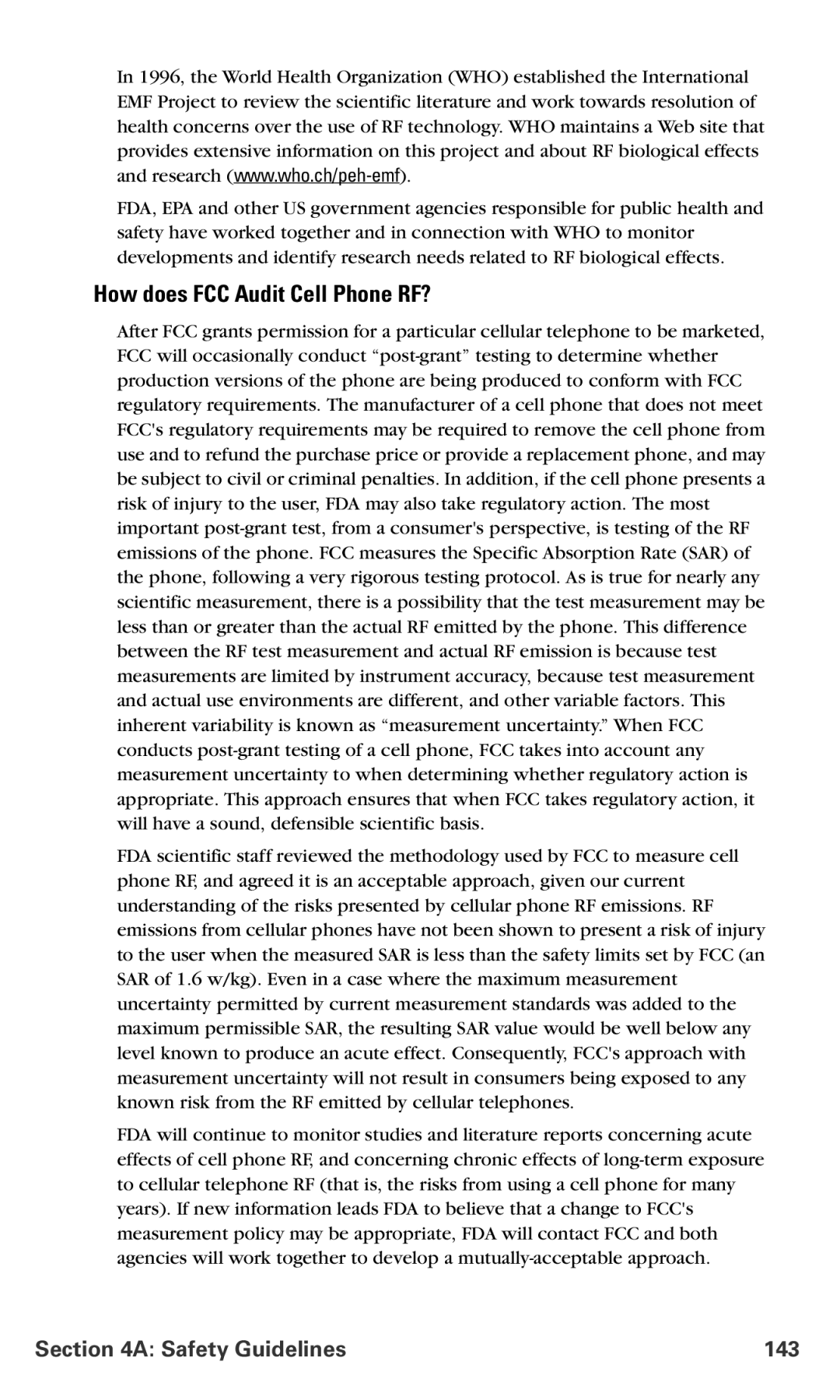In 1996, the World Health Organization (WHO) established the International EMF Project to review the scientific literature and work towards resolution of health concerns over the use of RF technology. WHO maintains a Web site that provides extensive information on this project and about RF biological effects and research
FDA, EPA and other US government agencies responsible for public health and safety have worked together and in connection with WHO to monitor developments and identify research needs related to RF biological effects.
How does FCC Audit Cell Phone RF?
After FCC grants permission for a particular cellular telephone to be marketed, FCC will occasionally conduct
FDA scientific staff reviewed the methodology used by FCC to measure cell phone RF, and agreed it is an acceptable approach, given our current understanding of the risks presented by cellular phone RF emissions. RF emissions from cellular phones have not been shown to present a risk of injury to the user when the measured SAR is less than the safety limits set by FCC (an SAR of 1.6 w/kg). Even in a case where the maximum measurement uncertainty permitted by current measurement standards was added to the maximum permissible SAR, the resulting SAR value would be well below any level known to produce an acute effect. Consequently, FCC's approach with measurement uncertainty will not result in consumers being exposed to any known risk from the RF emitted by cellular telephones.
FDA will continue to monitor studies and literature reports concerning acute effects of cell phone RF, and concerning chronic effects of
Section 4A: Safety Guidelines | 143 |
